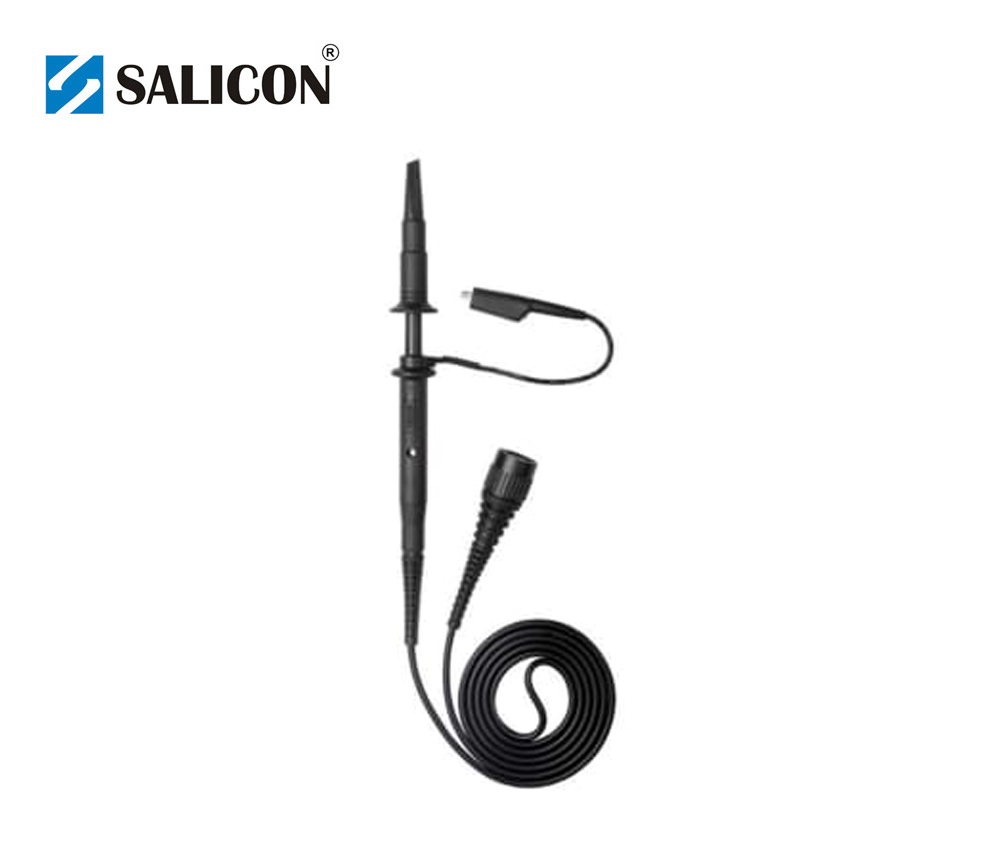Description
Rigol PVP3150 – 150 MHz Passive Probe with 1x:10x
Frequency Compensation
Before taking any measurement using a probe, first check the frequency compensation of the probe and adjust it to match the oscilloscope used. Generally, the oscilloscope provides a calibration signal output terminal at the front panel. Connect the probe (set the probe attenuation to 10X) to the signal output terminal to display a square waveform on the oscilloscope. Insert the adjustment tool into the compensation adjustment hole at the probe head and rotate it clockwise/counterclockwise until the properly compensated square waveform is displayed (flat-top square waveform).

Undercompensated

Overcompensated

Properly Compensated
Manufacturer Specs
| General Specifications | |
| Electrical Specifications | |
| Bandwidth | 1X: DC to 20 MHz 10X: DC to 150 MHz |
| Rise Time | 1X: 17.5 ns 10X: 2.3 ns |
| Attenuation Ratio | 10:1 or 1:1 Switchable |
| Input Resistance | 1X: 1 MΩ ± 1% @ DC 10X: 10 MΩ ± 1% @ DC |
| Input Capacitance | 1X: 50 pF ± 20 pF 10X: 10 pF ± 5 pF |
| Max. Rated Input Voltage | 1X: 150 VRMS CAT II 10X: 300 VRMS CAT II |
| Mechanical Characteristics | |
| Weight (probe only) | About 45 g |
| Cable Length | 120 ± 2 cm |
| Probe Tip Diameter | 4.8 mm |
| Environmental Specifications | |
| Temperature | Operating: 0℃ to +50℃ Nonoperating: -20℃ to +70℃ |
| Altitude | Operating: 2,000 m Nonoperating: 15,000 m |
| Max. Relative Humidity | 80% relative humidity for temperature up to +31℃, decreasing linearly to 40% relative humidity at +50℃ |
| Pollution Degree | Pollution Degree 2 |

Reviews
There are no reviews yet.